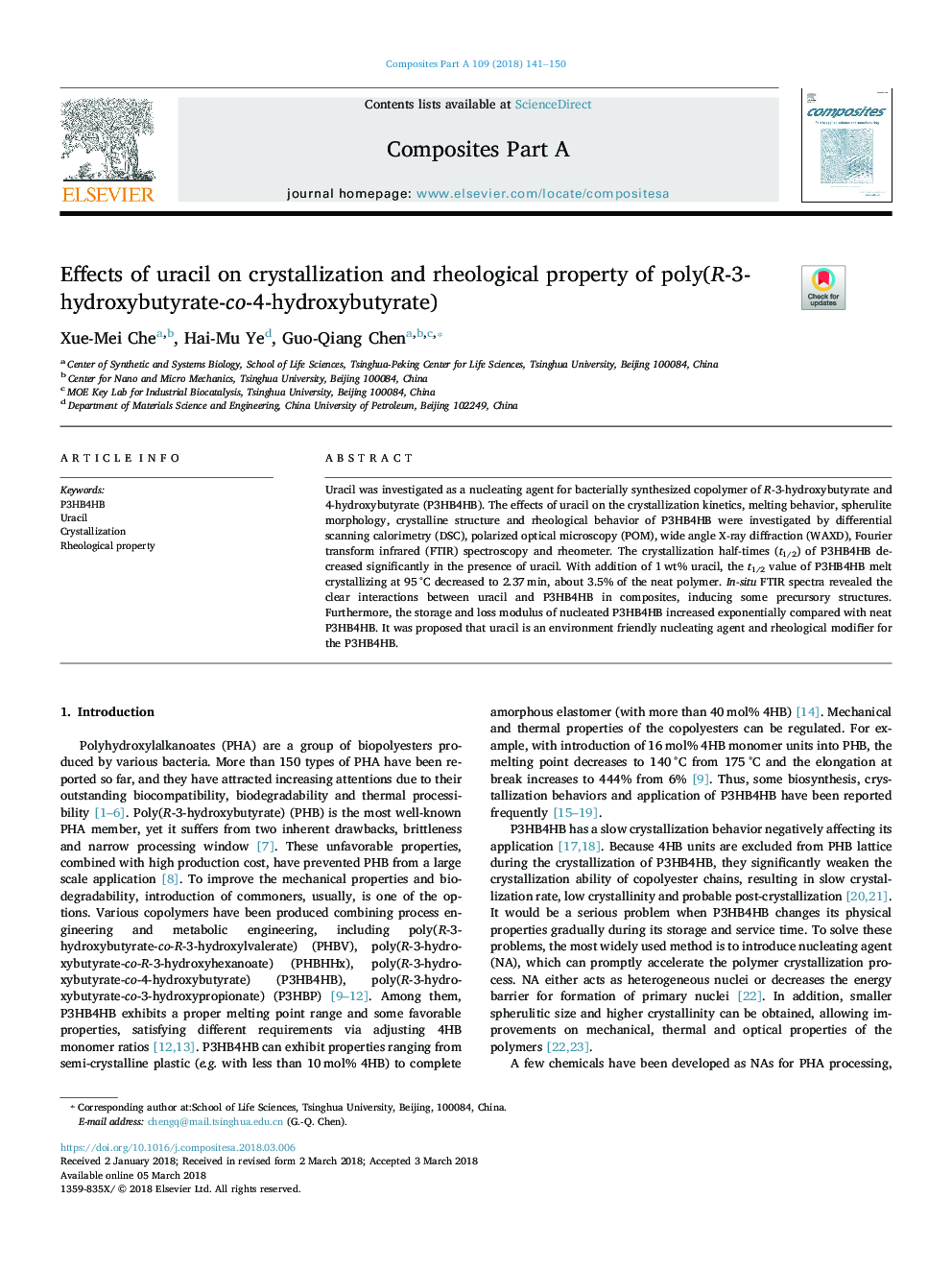| Article ID | Journal | Published Year | Pages | File Type |
|---|---|---|---|---|
| 7889575 | Composites Part A: Applied Science and Manufacturing | 2018 | 10 Pages |
Abstract
Uracil was investigated as a nucleating agent for bacterially synthesized copolymer of R-3-hydroxybutyrate and 4-hydroxybutyrate (P3HB4HB). The effects of uracil on the crystallization kinetics, melting behavior, spherulite morphology, crystalline structure and rheological behavior of P3HB4HB were investigated by differential scanning calorimetry (DSC), polarized optical microscopy (POM), wide angle X-ray diffraction (WAXD), Fourier transform infrared (FTIR) spectroscopy and rheometer. The crystallization half-times (t1/2) of P3HB4HB decreased significantly in the presence of uracil. With addition of 1â¯wt% uracil, the t1/2 value of P3HB4HB melt crystallizing at 95â¯Â°C decreased to 2.37â¯min, about 3.5% of the neat polymer. In-situ FTIR spectra revealed the clear interactions between uracil and P3HB4HB in composites, inducing some precursory structures. Furthermore, the storage and loss modulus of nucleated P3HB4HB increased exponentially compared with neat P3HB4HB. It was proposed that uracil is an environment friendly nucleating agent and rheological modifier for the P3HB4HB.
Related Topics
Physical Sciences and Engineering
Materials Science
Ceramics and Composites
Authors
Xue-Mei Che, Hai-Mu Ye, Guo-Qiang Chen,
